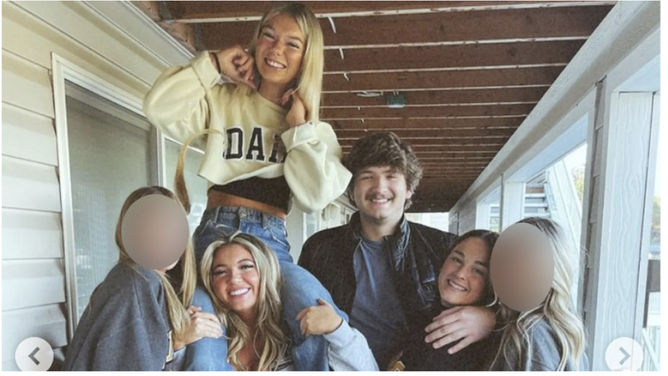Could Demolishing Idaho Murder House Help or Hurt Bryan Kohberger's Case?
In two weeks, it will mark one year since police arrested Bryan Kohberger, 28, as the suspect in the Idaho murder case -- one of the most of-interest crime stories over the past decade.
Police suspect him of stabbing to death four University of Idaho students in their shared home: Madison Mogen, Kaylee Goncalves, Ethan Chapin, and Xana Kernodle.
A date for Kohberger's trial has yet to be set.
But we now know potential jurors will not have a chance to visit the scene of the crime, 1122 King Road in Moscow, Idaho,
The university, which owns the home, announced on Thursday that the demolition of the house would begin Dec. 28, during winter break.
University President Scott Green calls the home a "grim reminder" of where four students were stabbed to death.
We don't dispute that. Understandably, the house prompts an overwhelming sense of sadness any time fellow students pass by.
Yet, legally, there's an argument the university should wait until the trial is complete.

Madison Mogen, Kaylee Goncalves, Ethan Chapin, Xana Kernodle, and two other housemates in Goncalves' final Instagram post. (@kayleegoncalves/Instagram)
Joseph Giacalone is a retired NYPD sergeant and adjunct professor at the John Jay College of Criminal Justice. He argued in a statement to Fox News Digital that jurors should have been taken inside the rooms in which the victims were slayed:
"I don’t see why the house needs to be demolished before the trial," said Giacalone.
"I understand the school wants to ‘move on,’ but walking the jury through the crime scene when you have it is important to give them a perspective that photos just can’t do."
Boise-based defense attorney Edwina Elcox agreed, explaining how visiting the site of a murder can change the outcome of a trial:
"Being able to visit the crime scene in certain cases is extremely important," said Elcox, who represented "Doomsday Mom" Lori Vallow.
"Video and pictures can help, but may not accurately depict the scene in the way an in-person visit can do. The house should be preserved until the trial concludes or Kohberger pleads guilty."
Earlier this year, South Carolina jurors visited the estate of Alex Murdaugh, where his wife, Maggie, and son, Paul were shot to death earlier this year.
Murdaugh was ultimately convicted of murder.
Then again, there's the case of OJ Simpson, where attorneys admittedly hung photos of black people in his home to sway the jurors in favor of Simpson, across racial lines.
So, demolishing the home hardly seals Kohberger's fate, one way or the other. And the prosecution likely feels it won't need the home to convict the suspect.
Though one sets himself up to be a fool by predicting the outcome of a trial before the date is even set, the evidence against Kohberger is substantial.

Bryan Kohberger, 28, is accused of killing Ethan Chapin, Xana Kernodle, Kaylee Goncalves and Madison Mogen. (Latah County Sheriff's Office)
Here is what we know, so far:
Per the probable cause filing, a surviving roommate awoke on the morning of the murders, opened her door, and saw a black-clad figure inside the home.
The man then walked toward her but passed by without contact.
She provided police with a physical description of the mysterious man in the home as “at least 5 feet, 10 inches” and “not very muscular, but athletically built with bushy eyebrows" -- all of which matches the description of Bryan Kohberger.
Notably, authorities recovered a knife sheath next to a fatally stabbed Madison Mogen, which contained Kohberger's DNA.
The sheath was made for a rare Ka-Bar knife that police believed was used to slay the four roommates.
A subsequent report from Dateline revealed that Kohberger purchased a Ka-Bar knife and sheath from Amazon seven months before the murders.
Then there's his cell phone.
While Kohberger's phone was shut off during the time of the stabbings, authorities obtained cell phone pings that showed his phone in the area of the King Road home "at least 12 times" before the morning of.
Officials also tracked Kohberger’s device back to the house, some five hours after the murders. (Perhaps he was looking for a left-behind sheath?)
Lastly, NewsNation reported in April that a source close to the situation claimed police found an "ID connected to someone from the quadruple homicide" at Kohberger’s residence during a search prior to his arrest.
Now, consider we only know about half of the evidence due to an ongoing gag order. That is how strong the evidence against Kohberger appears.
Ultimately, a jury can convict someone of murder based on circumstantial evidence, as we saw in the case of Alex Murdaugh.
But here, there appears to be physical and scientific evidence as well -- even with the home soon to be demolished.